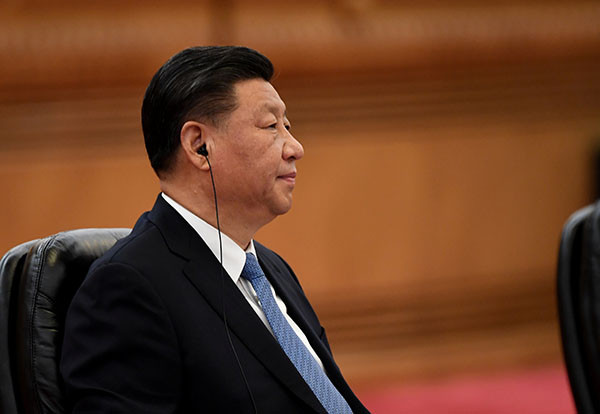China will soon reveal its directions for economic growth over the next decades in the face of increasing international hostility.
The fifth plenary session of the 19th Central Committee of the Communist Party of China began Monday in Beijing. The highlight of the four-day meeting, however, will be the "14th Five-Year (2021-2025) Plan for Economic and Social Development" and future targets for 2035.
Clouding the meeting the COVID-19 worldwide pandemic hurting the economies of China's leading trading partners on whom China relies for growth. There is also growing anti-China sentiment triggered by the pandemic.
The U.S. administration of Donald Trump blames China for the pandemic crisis in the U.S. that currently has 8.6 million cases and more than 225,000 deaths.
"We must seek development that has higher quality, higher efficiency, higher fairness, higher sustainability and higher safety," said the Politburo. "We must seek a synthesis of scale, speed, quality, efficiency and safety."
Statements from official China news media underscore the importance of the five-year plan to China's future given that the slowing in international trade has cut demand for its goods. China must also deal with a volatile international environment where China's economic and military rise is no longer viewed with suspicion but with hostility - especially in the Indo-Pacific, according to China watchers.
Last week, Japan Prime Minister Yoshihide Suga established a trilateral security alliance with Vietnam and Indonesia to counter China's expansionism in Asia.
And, at the start of the month, the foreign ministers of the U.S., Japan, India and Australia met in Tokyo to discuss curbing Chinese expansionism in the region.
These four powers are members of the Quadrilateral Security Dialogue - better known as "Quad." It was an initiative of former Japan Prime Minister Abe Shinzo and was organized in 2017.
Besides tackling an unfavorable political outlook, China will focus on what president Xi Jinping calls the "Double Development Dynamics" to secure economic growth. It will decrease China's reliance on exports for growth and boost domestic consumption. This rebalancing will allow China to "facilitate better connectivity between domestic and foreign markets for more resilient and sustainable growth," according to the party.
China will have to become self-sufficient in science and technology, it said. The trade war against the U.S. revealed a weakness as a consumer and not a creator of high-tech products.
China will strive for what it calls "high-tech independence" - especially the design and manufacturing of semiconductor chips vital to all modern technologies such as artificial intelligence, 5G, supercomputing and quantum computing. China plans to become independent in renewables, material science, new energy vehicles, biotechnology and space science.
The meeting will also unveil the midterm economic strategy called "2035 vision." This strategy represents the half-way mark to China 2050 when China intends to become a fully modernized, socialist nation and a great power.






